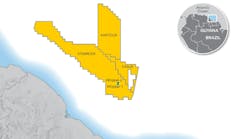Offshore staff
HOUSTON – The US Coast Guard has ended patrols and operations on the final three shoreline miles in Louisiana, bringing to a close the four-year active cleanup following the Deepwater Horizon accident. These operations ended in Florida, Alabama, and Mississippi in June 2013.
“Reaching this milestone is the result of the extraordinary efforts of thousands of people fromBP, local communities, government agencies, and academic institutions working together,” said John Mingé, chairman and president of BP America. “Immediately following the Deepwater Horizon accident, BP committed to cleaning the shoreline and supporting the Gulf’s economic and environmental recovery. Completing active cleanup is further indication that we are keeping that commitment.”
Although active cleanup has ended, the entire area of response is subject to theNational Response Center (NRC) process. Coast Guard personnel are pre-positioned to investigate any further reports of oil-based material.
“BP has spent more than $14 billion and more than 70 million personnel hours on response and cleanup activities,” said Laura Folse, BP’s executive vice president for Response and Environmental Restoration. “Even though active cleanup has ended, we will keep resources in place to respond quickly at the Coast Guard’s direction if potential Macondo oil is identified and requires removal.”
From the beginning, BP worked under the Coast Guard’s direction and in cooperation with state agencies and local governments to limit the accident’s impact on the environment, and to remove oil from the water and shoreline. Aerial reconnaissance flights were flown across 14,000 mi (22,531 km) of shoreline. Nearly 4,400 mi (7,081 km) were ground-surveyed, with teams identifying 1,104 mi (1,777 km) that experienced some level of oiling and 778 mi (1,252 km) that required some measure of cleaning.
04/22/2014




